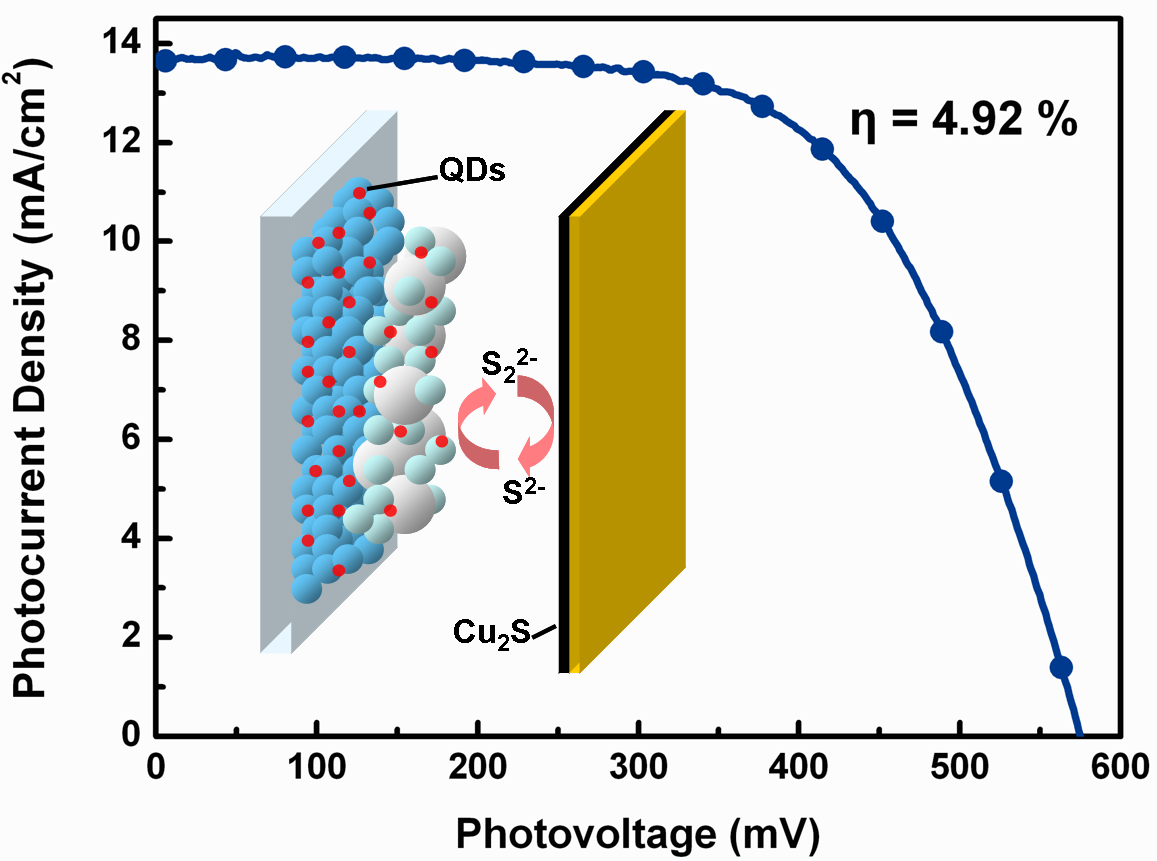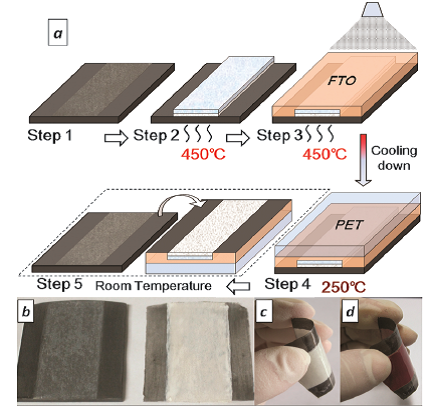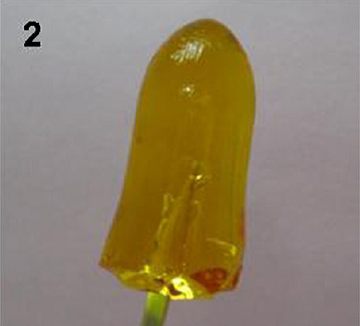Quantum Dot Solar Cells
Quantum dots-sensitized solar cell (QDSCs) is an important branch of dye-sensitized solar cell (DSCs), of which the architecture is the same as that of DSCs. The main change between QDSCs and DSCs is that, QDSCs adopts inorganic narrow-bandgap quantum dots (QDs) as sensitizers to absorb solar light, replacing traditional Ruthenium-based dye. Multiple advantages of QDs make QDSCs as a hot research area recently. (1) The selecting QDs variety, including CdS, CdSe, CuInS2 and so on, in which the intrinsic absorption edge and the best wavelength of absorbing light for different QDs are different. (2) The size of QDs can be changed by adjusting the bandgap of QDs. Thus, the aim of total absorption of visible light can be achieved simply by modulating the component and size of QDs. (3) The synthesize of QDs is simple and convenient, which reduces the cost of QDSCs. (4) Since QDs have high extinction efficiency, the thickness of photoanodes can be decreased without impairing the absorbing efficiency of light, further reducing the cost of QDSCs. (5) The possibility that QDs can absorb a high-energy photon to generate multiple electrons, make the efficiency enhancement of QDSCs has a bright future. Although QDs have a plenty of advantages, the reported highest efficiency of QDSCs is about 5%, lower than that of DSCs. In fact, to QDSCs, the research of photoanodes, electrolyte, counter electrodes and mechanism have not been carried out systematically. Challenges and opportunities co-exist. The future of QDSCs is positive.
Based on much experiences in DSCs, our group carried out the research of QDSCs before its flourished. Nowadays, our group has gained many breakthroughs, published a series of papers and promoted the development of QDSCs. (1) For photoanodes, 4.92% of high efficiency of QDSCs was obtained by optimizing TiO2 mesoporous films systematically; flexible QDSCs has been first studied, which enhances the application of QDSCs; the development of TiO2 nanotube-based QDSCs was improved by optimization of fibrous architecture of solar cells and the technique of transferring TiO2 nanotube arrays. (2) For electrolyte, it is successful to make aqueous electrolyte as hydrogel, promoting the stability of QDSCs. (3) For counter electrodes, we first apply carbon counter electrode in QDSCs, enhancing the efficiency of QDSCs significantly; fabricating sealed QDSCs with the paste of Cu2S/C composite, which can be doctor-bladed directly on conducting glass. (4) developing large-scale QDSCs and modulated QDSCs. (5) investigating the mechanism of QDSCs. At the same time, our group hopes to carry out extensive cooperation to further promote the development of QDSCs.

High efficient QDSCs (Phys. Chem. Chem. Phys., 2011, 13, 4659)

Fabrication of flexible QDSCs (Chem. Commun., 2011, 47, 2664)

Hydrogel of polysulfide electrolyte applied in QDSCs (Electrochem. Commun. 2010, 12, 1776)
News & Events
- A new world record 13.6% efficiency of CZTSSe solar cells by Institute of Physics, Chinese Academy of Sciences
- Congratulations for the graduation of Dr. Zhang and four undergraduate students
- Spring Hiking
- Na Zhou successfully defended her doctoral dissertation
- Our group joined the activity held by IOP labour union
